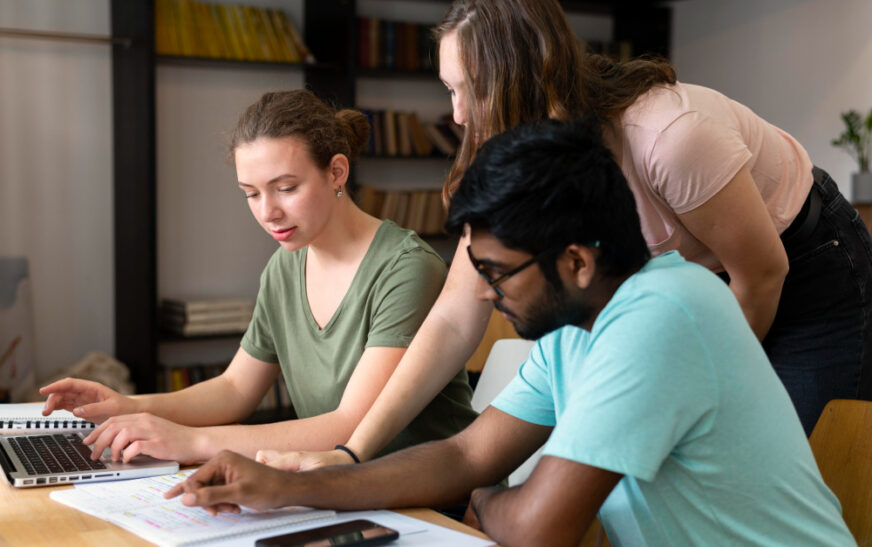For generations, field trips have been a cornerstone of enriching student learning. These excursions allow students to step outside the confines of the classroom and experience the world firsthand. However, traditional field trips can be limited by logistical challenges, cost, and safety concerns. This is where virtual field trips (VFTs) emerge as a powerful alternative – immersive online experiences that transport students to exciting locations and ignite their curiosity about the world around them.
The Power of Place: Reimagining Field Trips in the Digital Age
Traditional field trips offer undeniable benefits – exposure to new environments, hands-on learning experiences, and opportunities for social interaction. However, they can be hindered by:
- Logistical Challenges: Coordinating transportation, permission slips, and chaperones can be a time-consuming burden for teachers.
- Cost Limitations: Travel costs can restrict field trip opportunities for schools with limited budgets.
- Safety Concerns: Student safety remains a top priority, and some locations might pose logistical challenges.
Statistics: A report by the Center for Interactive Learning (CIL) revealed that 42% of teachers avoid field trips due to logistical hurdles and budget constraints [2].
Virtual Field Trips: A World of Possibilities at Your Fingertips
VFTs address the limitations of traditional field trips, offering a dynamic and accessible learning tool:
- Immersive Experiences: Students can virtually explore museums, historical sites, nature reserves, and even outer space through 360° panoramas, interactive maps, and high-definition videos.
- Accessibility and Flexibility: VFTs eliminate geographical limitations, allowing students to visit any location in the world, regardless of weather or travel restrictions.
- Cost-Effective Solution: VFTs offer a cost-effective alternative to traditional field trips, eliminating transportation and admission fees.
- Engaging Content: VFTs often incorporate interactive elements like quizzes, games, and virtual tours, keeping students engaged and actively learning.
Statistics: A study by the Journal of Educational Technology Development and Exchange (JETDE) found that students using VFTs demonstrated a 15% increase in knowledge retention compared to traditional classroom learning [3].
Unlocking the Potential: Maximizing the Learning Impact of VFTs
To maximize the learning impact of VFTs, consider these effective implementation strategies:
- Pre-Trip Preparation: Set clear learning objectives, introduce relevant background information, and engage students in discussions about what they expect to learn from the virtual experience.
- Active Learning During the VFT: Encourage students to take notes, participate in interactive elements, and ask questions throughout the virtual exploration.
- Post-Trip Activities: Solidify learning through discussions, reflection activities, creative projects, or presentations based on the VFT experience.
Statistics: A report by the International Society for Technology in Education (ISTE) emphasizes the importance of pre- and post-VFT activities to enhance learning outcomes [4].
A World of Learning Awaits: Exploring Different Types of Virtual Field Trips
The vast array of VFTs caters to diverse learning interests and curriculum needs:
- Museum and Historical Site VFTs: Students can virtually explore museums like the Louvre or historical landmarks like the Great Wall of China.
- Science and Nature VFTs: Embark on virtual journeys through the rainforest canopy, dive into the coral reefs, or explore the wonders of the human body.
- Cultural VFTs: Immerse students in diverse cultures by taking virtual tours of landmarks, traditional ceremonies, and everyday life in different parts of the globe.
- Career Exploration VFTs: Expose students to various career paths by taking virtual tours of workplaces like factories, hospitals, or media studios.
Statistics: A study by Edutopia found that VFTs are most effective when aligned with specific learning objectives and integrated into the curriculum [5].
Beyond the Screen: VFTs as a Springboard for Real-World Learning
VFTs can ignite a passion for learning that extends beyond the virtual experience:
- Connecting Virtual to Real-World Experiences: Plan follow-up activities like visiting local museums, historical sites, or nature centers to solidify learning and connect the virtual experience to the real world.
- Encouraging Student Research: Use VFTs as a springboard for student research projects on topics that pique their curiosity during the virtual exploration.
- Fostering Global Citizenship: VFTs can cultivate an appreciation for diverse cultures and environmental issues, promoting global citizenship and a sense of interconnectedness.
The Future of Learning: A Blended Approach
VFTs are not intended to replace traditional field trips entirely. The ideal scenario lies in a blended approach that leverages the strengths of both:
- Enhanced Learning Experiences: VFTs can serve as a powerful pre-trip activity to introduce concepts and build anticipation for a future in-person field trip.
- Personalized Learning: VFTs offer a flexible and adaptable tool that caters to diverse learning styles and interests, complementing traditional classroom instruction.
- Lifelong Learning: VFTs can instill a love for learning that extends beyond the classroom, encouraging students to explore the world around them with curiosity and a thirst for knowledge.
Statistics: A report by the Clayton Christensen Institute for Disruptive Innovation predicts that blended learning models will become increasingly prevalent in the future of education [6].
Frequently Asked Questions (FAQ)
General Questions:
- What are virtual field trips (VFTs)?
VFTs are immersive online learning experiences that allow students to virtually explore locations and environments relevant to their curriculum. They often incorporate 360° panoramas, videos, interactive elements, and educational content.
- What are the benefits of using VFTs?
VFTs offer several advantages:
Accessibility: Students can explore any location in the world, regardless of travel restrictions or budget limitations.Engagement: Interactive elements and immersive experiences keep students actively involved in the learning process.Cost-Effectiveness:VFTs are a cost-efficient alternative to traditional field trips, eliminating transportation and admission fees.Flexibility:VFTs can be easily integrated into the curriculum and adapted to various learning styles.
- Are VFTs effective for learning?
Studies show that VFTs can be just as effective, or even more effective, than traditional field trips in terms of knowledge retention and student engagement. However, their effectiveness depends on how they are implemented.
Planning and Implementation:
- How can I choose the right VFT for my class?
Consider your curriculum objectives, student age group, and learning styles when selecting a VFT. Many websites offer VFTs on various topics, so research and compare options before choosing.
- What are some tips for using VFTs effectively?
- Prepare students with pre-trip activities to introduce relevant background information and set learning goals.
- Encourage active participation during the VFT with discussions, note-taking, and interactive elements.
- Solidify learning with post-trip activities like reflection exercises, presentations, or creative projects.
Conclusion
Virtual field trips offer a transformative learning experience, transcending geographical limitations and igniting a spark of curiosity in students. By embracing VFTs and implementing them effectively, educators can create a dynamic and engaging learning environment that empowers students to become lifelong learners and responsible global citizens.



















